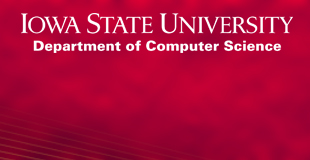John Mauchly Visits Ames
December 1940
In December 1940 Atanasoff attended the annual meeting of the American Association for the Advancement of Science (AAAS) in Philadelphia. John Mauchly was a scientist giving a presentation on his harmonic analyzer, a machine for carrying out calculations related to weather patterns. Following his presentation, JVA introduced himself to Mauchly and the two began a discussion about computing machines.
Mauchly expressed interest in the computer JVA was working on and had many questions about its operation. Atanasoff apologetically explained to Mauchly that he had been cautioned by Iowa State College and the patent lawyer Richard Trexler not to disclose information that may jeopardize the patent. But he did invite Mauchly to come to Ames and see the computer and how it functioned.
June 1941
Mauchly accepted this invitation and traveled to Ames from Philadelphia, arriving on June 13, 1941. He spent four days in the company of either JVA or Clifford Berry. Mauchly saw the computer, and spent much time with JVA and Berry discussing how it was designed and how it worked. Mauchly also read parts of the 35-page documentation JVA and Berry had written on the machine and Mauchly took notes on its contents. When he asked Atanasoff for a copy, JVA declined, citing the need to protect the ideas and designs within until the patent application was finalized.
JVA saw in John Mauchly a fellow scientist who was as passionate as he was about exploring the possibilities of computing machines. In Clark Mollenhoff's book, Atanasoff: Forgotten Father of the Computer, Mollenhoff writes that JVA, while aware that the patent applications were not finalized, believed that Mauchly was an honorable man who would not take advantage of a fellow scholar. Other influential scientists had traveled to Iowa State College and visited with JVA about various research projects and ideas, including Dr. Samuel Caldwell, an eminent MIT mathematician, and Dr. Warren Weaver, who worked on a computing project for Kodak Eastman at the time. JVA was used to discussing new ideas with fellow scientists, and just did not suspect that Mauchly would take advantage of those discussions. Furthermore, JVA assumed that the pursuit of the patents on his designs would be fulfilled, and he would not need to worry about such issues.
Following the attack on Pearl Harbor in December 1941, national priorities changed and altered the career direction for many scientists, including JVA. Upon completion of his degree Clifford Berry accepted a position in national defense in California. JVA accepted a new position as a civilian consultant to the Naval Ordnance Laboratory in Washington D.C. The patent paperwork on the ABC was left in the hands of Iowa State College (who had a majority stake in the proceeds from the invention) and Richard Trexler, the patent attorney hired to shepherd the ABC through the patent process.
John Mauchly went on to build the ENIAC computer, and with J. Presper Eckert, patent the machine as the first digital electronic computer. The University of Pennsylvania's library's electronic exhibition, John W. Mauchly and the Development of the ENIAC Computer, is a good site that outlines the ENIAC and its contributions to computing history, while also acknowledging that Mauchly failed to give Atanasoff his due for inspiring certain aspects of Mauchly's computer architecture and design. The federal court system took care of that in 1972.

